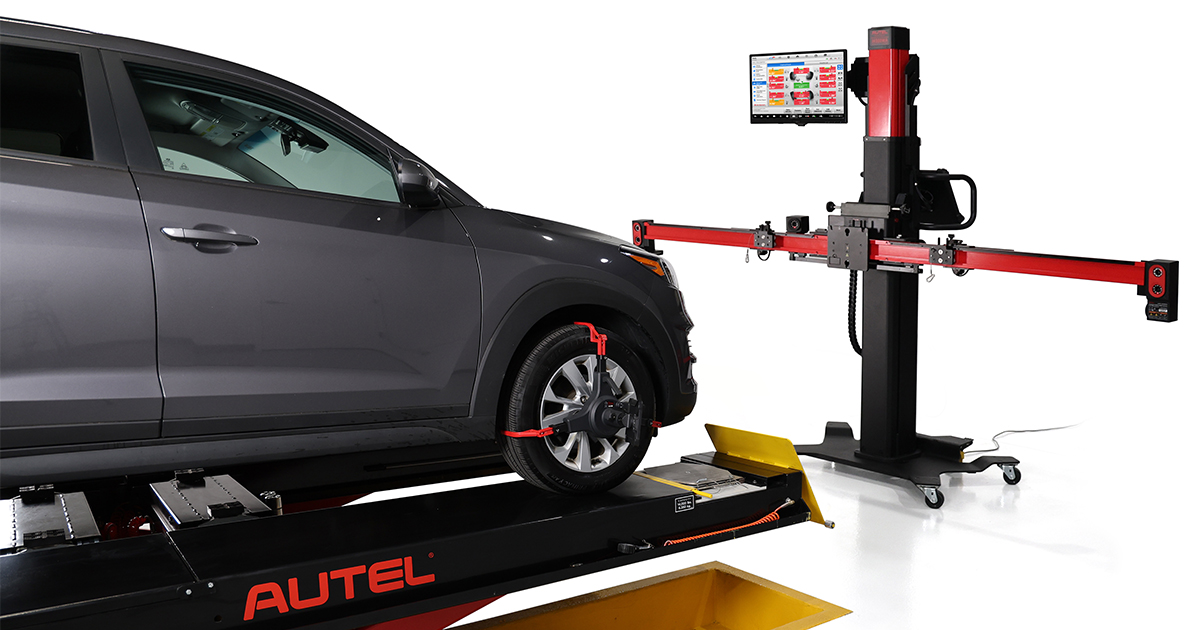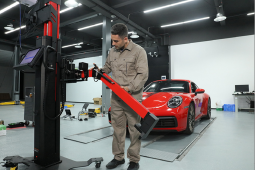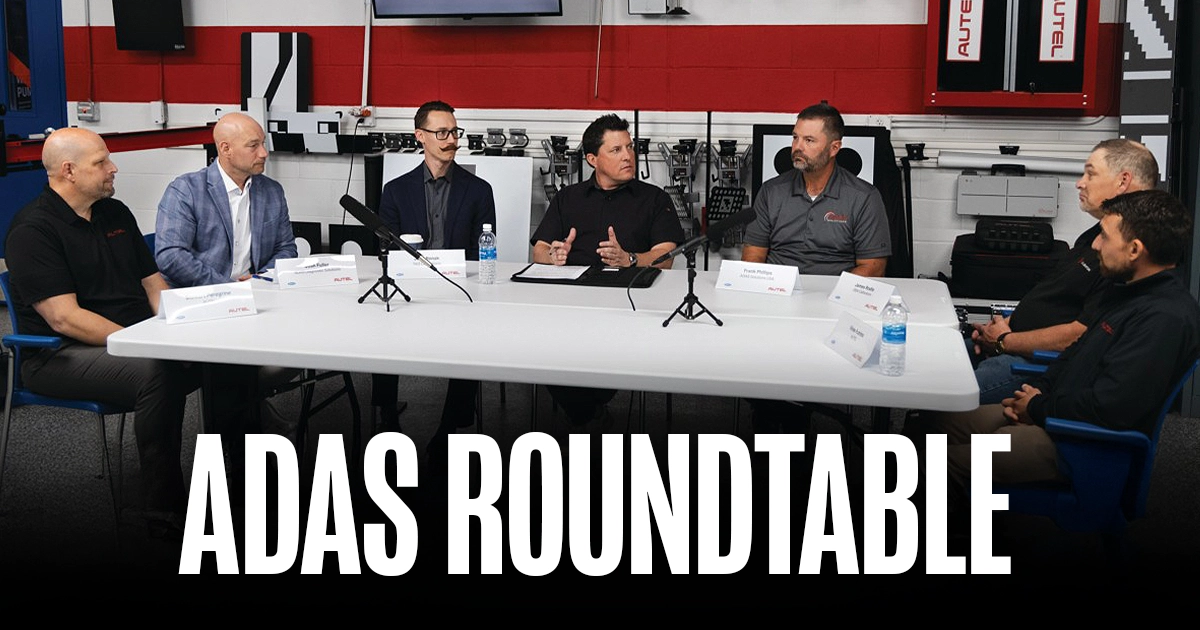Originally published by Vehicle Service Pros, March 26, 2024

Stewart, a Master ASE Technician, has more than 30 years in the industry with a focus on solutions for increasing shop efficiency and emerging automotive technologies like diagnostics and ADAS calibration.
Advanced driver assistance systems (ADAS) in newer vehicles have made repairing and calibrating vehicles more complicated. Technicians today have to learn new technology and processes to ensure safe, complete repairs. Staying up to speed on the latest in ADAS equipment and coverage is crucial for your shop’s success.
Many repair shops are already reaping the rewards of bringing ADAS calibrations in-house. In the following Q&A — part one of a five-part series on ADAS — Stewart Peregrine, Autel senior executive of sales — ADAS, outlines the basics and benefits of ADAS calibration. Learn how bringing ADAS in-house, with the right equipment and coverage, can improve operations and keep more revenue in your shop.
How has the development of Advanced Driver Assistance Systems (ADAS) changed the technology and equipment required to provide complete, safe repairs in the automotive aftermarket?
 ADAS has changed the workflow and what’s required to provide safe, complete repairs in the automotive aftermarket. The evolution of ADAS opened our eyes at Autel early on, and we began researching what we needed to do to help these shops complete repairs in a timely fashion with this new technology
ADAS has changed the workflow and what’s required to provide safe, complete repairs in the automotive aftermarket. The evolution of ADAS opened our eyes at Autel early on, and we began researching what we needed to do to help these shops complete repairs in a timely fashion with this new technology
Placing targets manually and accurately within ADAS OEM specs can be very difficult. It’s also difficult to ensure proper validation to prove what repairs were made. Autel has expanded upon the OEM method with its ADAS equipment lineup, simplifying ADAS calibrations and OEM procedures for today’s technicians.
When is ADAS calibration required to complete repairs safely and thoroughly?
 ADAS calibration is required for basic front or rear bumper collision events, when taillights or mirrors are impacted, when damage involves radar and cameras, or even when seatbelts need to be reset. Anytime a sensor is removed, a bracket is replaced, or anything is disturbed, you typically need to do a recalibration.
ADAS calibration is required for basic front or rear bumper collision events, when taillights or mirrors are impacted, when damage involves radar and cameras, or even when seatbelts need to be reset. Anytime a sensor is removed, a bracket is replaced, or anything is disturbed, you typically need to do a recalibration.
An ADAS calibration is required after many common procedures, such as wheel alignment or ride-height changes. Technicians also have to look out for any technical service bulletins (TSBs) from the auto manufacturers that involve new calibration needs for their vehicles. With today’s lineup of vehicles, events where ADAS calibration is required are growing, reaffirming the need to find a way to keep these chargeable repairs within your shop.
Why should technicians and decision-makers consider investing in ADAS equipment for their business and keep calibrations in-house?
 The first thing to consider is that ADAS calibrations are required and necessary to complete vehicle repairs today, in part due to insurance requirements and changing service and repair requirements from OEMs.
The first thing to consider is that ADAS calibrations are required and necessary to complete vehicle repairs today, in part due to insurance requirements and changing service and repair requirements from OEMs.
An investment in ADAS equipment can greatly reduce cycle times by decreasing the number of days it takes to have a vehicle repair completed, and the unit returned to the customer. There’s more revenue available for your shop if you’re still sending ADAS calibrations outside of the business. These ADAS procedures — along with other companion procedures like vehicle scans, alignment, seat belt, and steering angle sensor resets — are all billable events for your shop.
There is also the liability aspect to consider. If the calibrations were not performed correctly or thoroughly when sublet, you open your shop to potential legal repercussions. If the vehicle came into your shop, you’re ultimately responsible for the repair, whether you sublet the repair or did it yourself. Keeping ADAS calibrations in-house makes for better visibility and reporting processes that confirm the vehicle has been repaired completely and safely.
Can you provide an overview of Autel’s comprehensive approach to ADAS calibration?
 It all begins with a pre-scan, during which technicians can identify any potential issues and verify the health of all the modules on the car. If shops are utilizing the single system IA900WA wheel alignment and ADAS calibration frame paired with a MaxiSYS diagnostics tablet, technicians can easily make sure the alignment is correct after it’s been in a collision. We’re able to do all of this digitally, and users can document anything that is potentially wrong with the vehicle in a digital report. That’s where an adasThink report comes in — it takes an estimate and lists any ADAS components that were affected during the vehicle crash and what is required from a safety ADAS calibration perspective.
It all begins with a pre-scan, during which technicians can identify any potential issues and verify the health of all the modules on the car. If shops are utilizing the single system IA900WA wheel alignment and ADAS calibration frame paired with a MaxiSYS diagnostics tablet, technicians can easily make sure the alignment is correct after it’s been in a collision. We’re able to do all of this digitally, and users can document anything that is potentially wrong with the vehicle in a digital report. That’s where an adasThink report comes in — it takes an estimate and lists any ADAS components that were affected during the vehicle crash and what is required from a safety ADAS calibration perspective.








